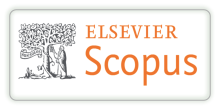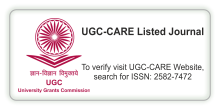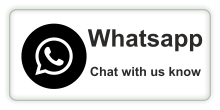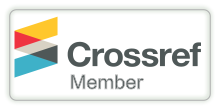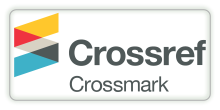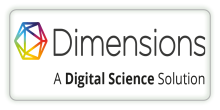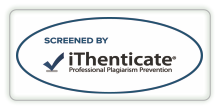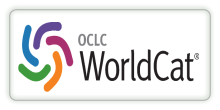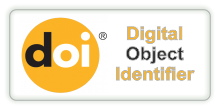IMPACT OF NEW TECHNOLOGICAL DEVELOPMENTS ON EDUCATION AND LIFE SKILL DEVELOPMENT OF VISUALLY IMPAIRED AND DEAF-BLIND CHILDREN
नई तकनीकी विकास का दृष्टिबाधित और बधिर-अंधता वाले बच्चों की शिक्षा और जीवन कौशल विकास पर प्रभाव
DOI:
https://doi.org/10.29121/shodhkosh.v5.i1.2024.6137Keywords:
Visually Impaired, Deaf-Blind, Technical and Technological Development, Life Skills DevelopmentAbstract [English]
This article examines the impact of new technological developments on education and life skill development of visually impaired and deaf-blind children. Advances in assistive technologies such as screen readers, braille displays, haptic devices, augmented or virtual reality, etc. have significantly improved access to information and educational activities for visually impaired and deaf-blind students. Technology has enhanced communication capabilities for these students through devices such as tactile communication boards, which enable interaction with peers and teachers. The use of technology helps visually impaired and deaf-blind children develop essential life skills such as communication, independent movement, time management, etc. Integrating accessible digital educational content software and platforms in classrooms promotes more inclusive and personalized learning experiences. Professional development for teachers on using assistive technology and creating accessible curriculum is crucial for creating effective learning environments. Challenges remain in areas such as availability and maintenance of teacher training equipment, assessing needs, and providing adequate information on assistive technology. Future innovations should focus on improving hardware, software, and developing new assistive technologies, especially for the disabled population. Primarily, the article surveys the literature to explore how technology serves as an empowering force for visually impaired and deaf-blind students, improving their learning, skill development, and inclusion in mainstream schooling.
Abstract [Hindi]
यह लेख दृष्टिहीन और बहरे-अंधे बच्चों की शिक्षा और जीवन कौशल विकास पर नए तकनीकी विकास के प्रभाव की जांच करता है। स्क्रीन रीडर, ब्रेल डिस्प्ले, हैप्टिक डिवाइस, संवर्धित या आभासी वास्तविकता आदि जैसी सहायक तकनीकों में प्रगति ने दृष्टिबाधित और बहरे-अंधे छात्रों के लिए सूचना और शैक्षिक गतिविधियों तक पहुंच में काफी सुधार किया है। प्रौद्योगिकी ने इन छात्रों के लिए स्पर्श संचार बोर्डों जैसे उपकरणों के माध्यम से संचार क्षमताओं को बढ़ाया है, जो साथियों और शिक्षकों के साथ बातचीत को सक्षम करता है। प्रौद्योगिकी का उपयोग दृष्टिबाधित और बहरे-अंधे बच्चों में संचार स्वतंत्र संचालन, समय प्रबंधन आदि जैसे आवश्यक जीवन कौशल विकसित करने में मदद करता है। कक्षाओं में सुलभ डिजिटल शैक्षिक सामग्री सॉफ्टवेयर और प्लेटफार्मों को एकीकृत करना अधिक समावेशी और व्यक्तिगत सीखने के अनुभव बढाता है। सहायक तकनीक का उपयोग करने और सुलभ पाठ्यक्रम बनाने पर शिक्षकों के लिए व्यावसायिक विकास प्रभावी शिक्षण वातावरण के निर्माण के लिए महत्वपूर्ण है। शिक्षक प्रशिक्षण उपकरण की उपलब्धता व रखरखाव, जरूरतों का आकलन करने और सहायक तकनीक पर पर्याप्त जानकारी प्रदान करने जैसे क्षेत्रों में चुनौतियाँ बनी हुई हैं। भविष्य के नवाचारों को हार्डवेयर, सॉफ्टवेयर में सुधार और विशेष रूप से विकलांग आबादी के लिए नई सहायक प्रौद्योगिकियों के विकास पर ध्यान केंद्रित करना चाहिए। मुख्य रूप से, लेख में साहित्यिक सर्वेक्षण के दौरान इस बात का पता चलता है कि कैसे प्रौद्योगिकी दृष्टिहीन और बहरे-अंधे छात्रों के लिए एक सशक्त बल के रूप में कार्य करती है, उनकी शिक्षा में सुधार, कौशल विकास और मुख्यधारा की स्कूली शिक्षा में शामिल है।
References
Al-Busaidi, S., & Tuzlukova, V. (2017, December 1). Challenges with creating accessible and useful learning environments for language education of students with visual impairments. https://doi-org/10-1109/icta-2017-8336010
Albalhareth, A.H., & Salim, S.S. (2023, July 19). Teacher satisfaction with the availability of assistive technologies for students with sensory impairments in inclusive schools. https://doi-org/10-46328/ijemst-3541
Baker, C.M., Milne, L.R., & Ladner, R.E. (2019, May 2). Understanding the impact of TVI on technology use and selection by children with visual impairments. https://doi-org/10-1145/3290605-3300654
Bouzid, Y., & Jemani, M. (2020, February 1). Avatar technology for educational support of deaf learners: A review. https://doi-org/10-1109/octa49274-2020-9151455
Chambers, D. (2020, September 25). Assistive technology supporting inclusive education: Current and emerging trends. https://www-emerald-com/insight/content/doi/10-1108/S1479&363620200000014001/full/html
Chambers, D. (2020, September 25). Assistive technology supporting inclusive education: Current and emerging trends. International Perspectives on Inclusive Education, 1-16. https://doi-org/10-1108/s1479&363620200000014001
Chelkowski, L., Yan, Z., & Asaro-Sadler, K. (2019, April 18). Using mobile devices with students with disabilities: A literature review. https://www-tandfonline-com/doi/full/10-1080/1045988X-2019-1591336
Fen, W., & Xu, C. (2010, February 1). Using educational technology to support learning for deaf students. https://doi-org/10-1109/iccae-2010-5451670
Hayes, C., & Proulx, M.J. (2023, January 26). Turning a blind eye? Removing barriers to science and mathematics education for students with visual impairments. https://doi-org/10-1177/02646196221149561
Karkar, A., & Al-Madeed, S. (2018, August 1). Mobile assistive technologies for users with visual impairments: A survey. https://doi-org/10-1109/comapp-2018-8460406
Kelly, S.M., & Smith, D.W. (2011, February 1). The impact of assistive technology on the academic performance of students with visual impairments: A synthesis of research. Journal of Visual Impairment and Blindness, 105(2), 73-83. https://doi-org/10-1177/0145482Û1110500205
Mamta, A., Lavanya, K.L. L., Radhika, G., & Rani, C.S.L. (2022, April 12). Using computer technology to support students with special needs. https://ijarsct-co-in/apri1-html
Pham, A.V., Bennett, K.D., & Jeetina, H. (2019, October 1). Technology-assisted interventions for individuals with autism: Implications for policy and practice. Policy Insights from Behavioral and Brain Sciences, 6 (2), 202-209. https://doi-org/10-1177/2372732219857750
Stetter, M.E. (2018, April 24). Using technology to support high-incidence school-aged students in reading. https://www-mdpi-com/2227&7102/8/2/61 DOI: https://doi.org/10.3390/educsci8020061
The Impact of Assistive Technology on the Academic Performance of Students with Visual Impairments: A Synthesis of Research - Stacey M. Kelly, Derrick W. Smith, 2011. (2019, January 7). https://journals-sagepub-com/doi/abs/10-1177/0145482X1110500205
Tuvem, S.T.B., & Berry, A.B. (2018, May 24). Assistive Technology for Students with Visual Impairments: A Resource for Teachers, Parents, and Students. https%//journals-sagepub-com/doi/10-1177/8756870518773397
Downloads
Published
How to Cite
Issue
Section
License
Copyright (c) 2024 Anil Kumar, Gopal Singh

This work is licensed under a Creative Commons Attribution 4.0 International License.
With the licence CC-BY, authors retain the copyright, allowing anyone to download, reuse, re-print, modify, distribute, and/or copy their contribution. The work must be properly attributed to its author.
It is not necessary to ask for further permission from the author or journal board.
This journal provides immediate open access to its content on the principle that making research freely available to the public supports a greater global exchange of knowledge.





